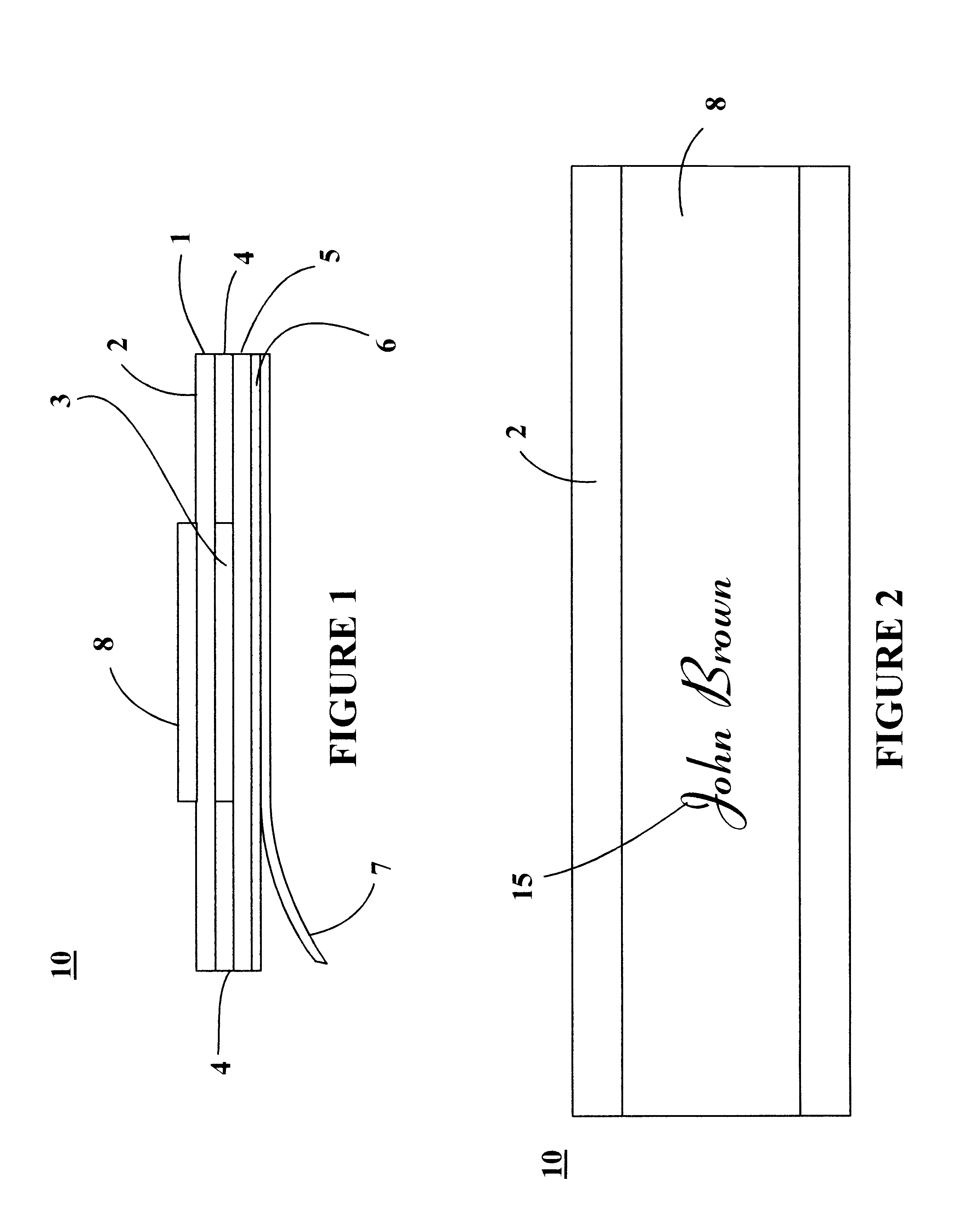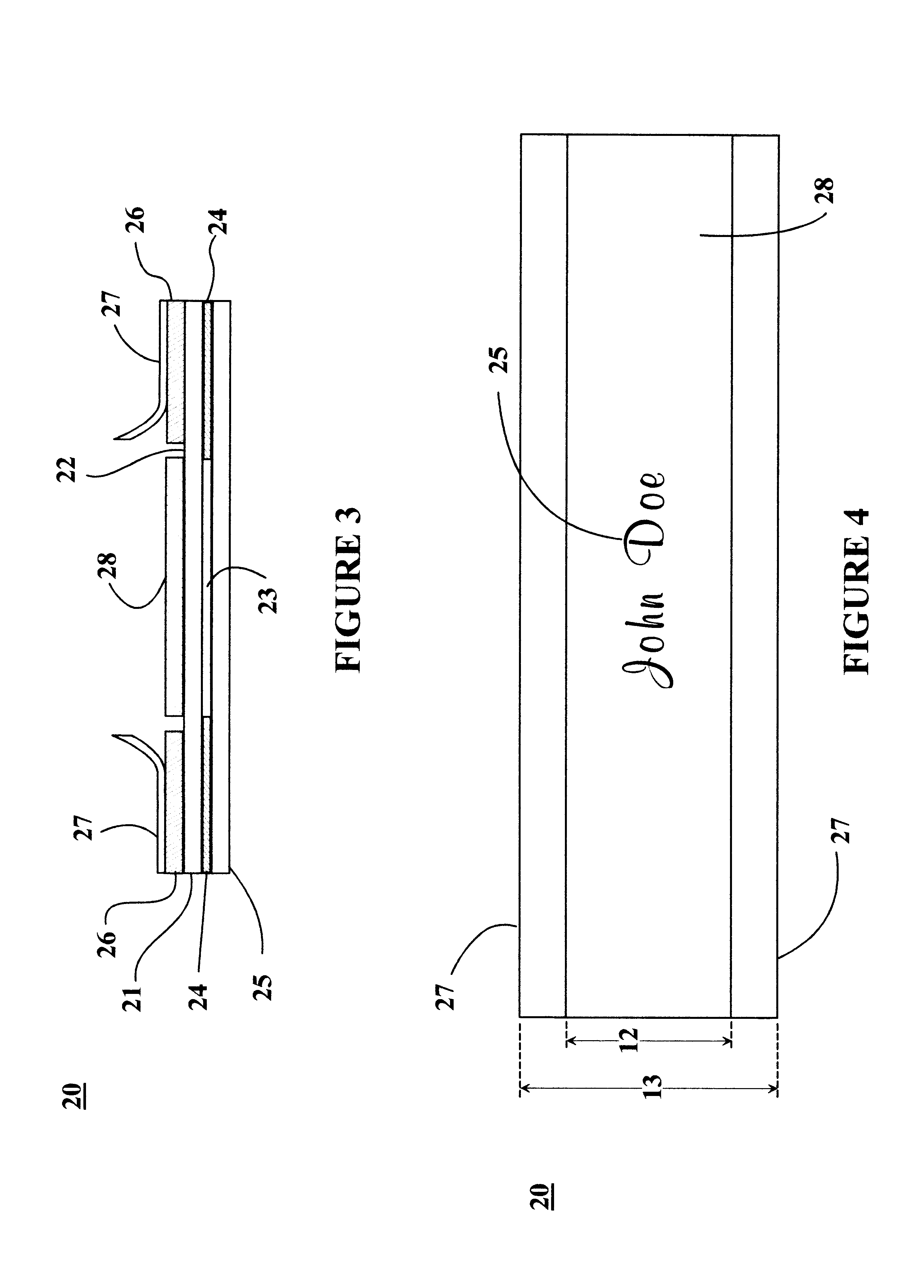X-ray labeling tape
a technology for labeling tape and x-ray films, applied in the direction of optics, instruments, electrical appliances, etc., can solve the problems of unlabeled x-ray films being misplaced and/or misidentified, prone to failure of devices, and not addressing the problem of visibility of information inscribed on the layer
- Summary
- Abstract
- Description
- Claims
- Application Information
AI Technical Summary
Benefits of technology
Problems solved by technology
Method used
Image
Examples
Embodiment Construction
FIG. 1 is a cross-sectional view of one of the Preferred Embodiments of the invention, adapted to be affixed to an x-ray film cassette with the upper surface of the marking tape facing upwards and away from the surface of the film cassette. The marking tape 10 is a permanent laminate of an upper film 1, a radiopaque emulsion 3, and a lower film 5. The radiopaque emulsion 3 is centered along the longitudinal axis of the marker 10 and has a width that is less that of the marking tape 10. A middle coating of pressure-sensitive adhesive 4 is placed on the lower surface of the upper film 1, so as to bond the upper film 1 to the lower film 5, thereby sandwiching the radiopaque emulsion 3 between the two films. The bottom surface of the lower film 5 is coated with a bottom coating of pressure-sensitive adhesive 6. A peelable release backing 7 covers and protects the bottom coating of pressure-sensitive adhesive 6 until the marking tape 10 is to be affixed to a film cassette. The upper film...
PUM
 Login to View More
Login to View More Abstract
Description
Claims
Application Information
 Login to View More
Login to View More - R&D
- Intellectual Property
- Life Sciences
- Materials
- Tech Scout
- Unparalleled Data Quality
- Higher Quality Content
- 60% Fewer Hallucinations
Browse by: Latest US Patents, China's latest patents, Technical Efficacy Thesaurus, Application Domain, Technology Topic, Popular Technical Reports.
© 2025 PatSnap. All rights reserved.Legal|Privacy policy|Modern Slavery Act Transparency Statement|Sitemap|About US| Contact US: help@patsnap.com



